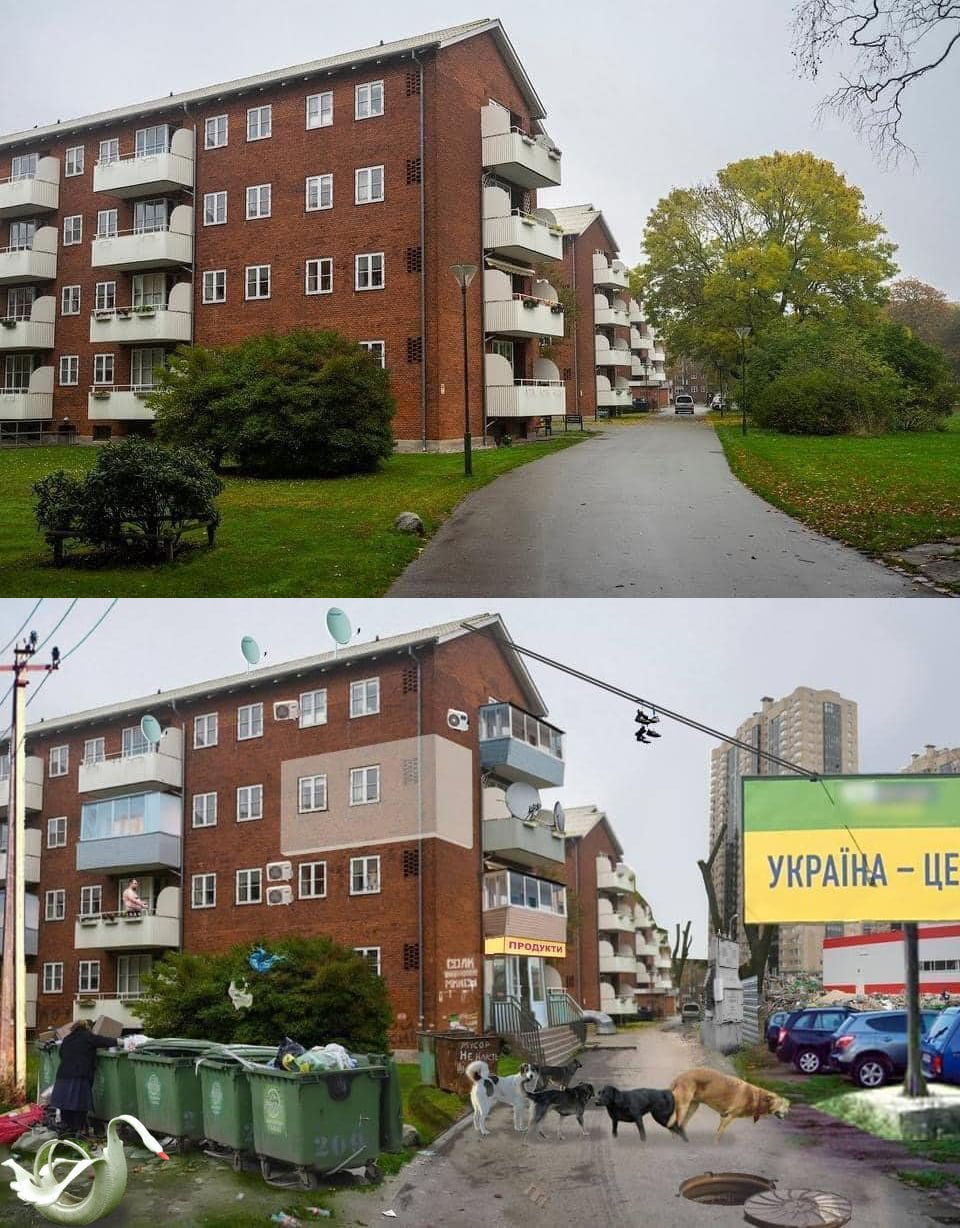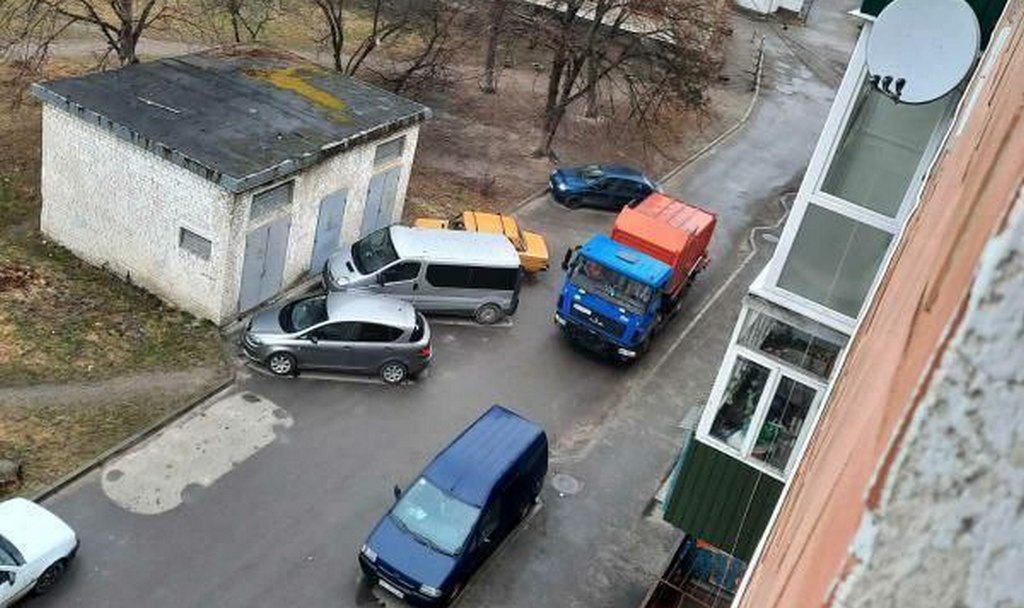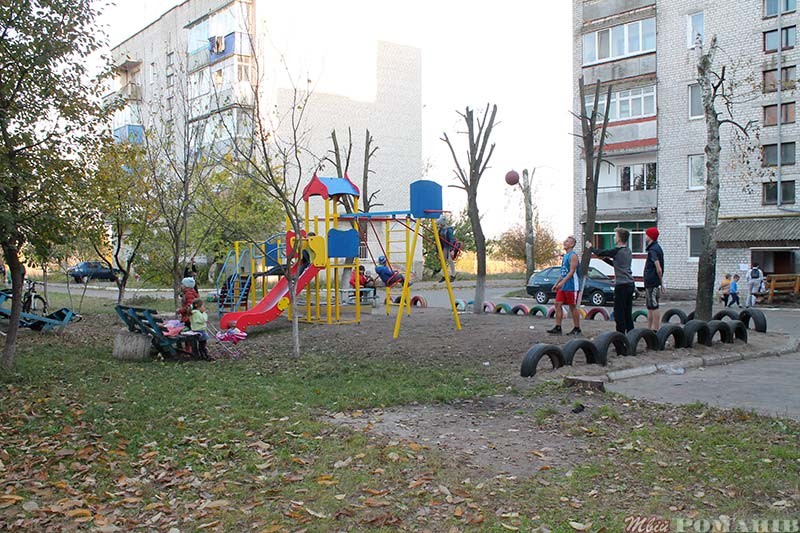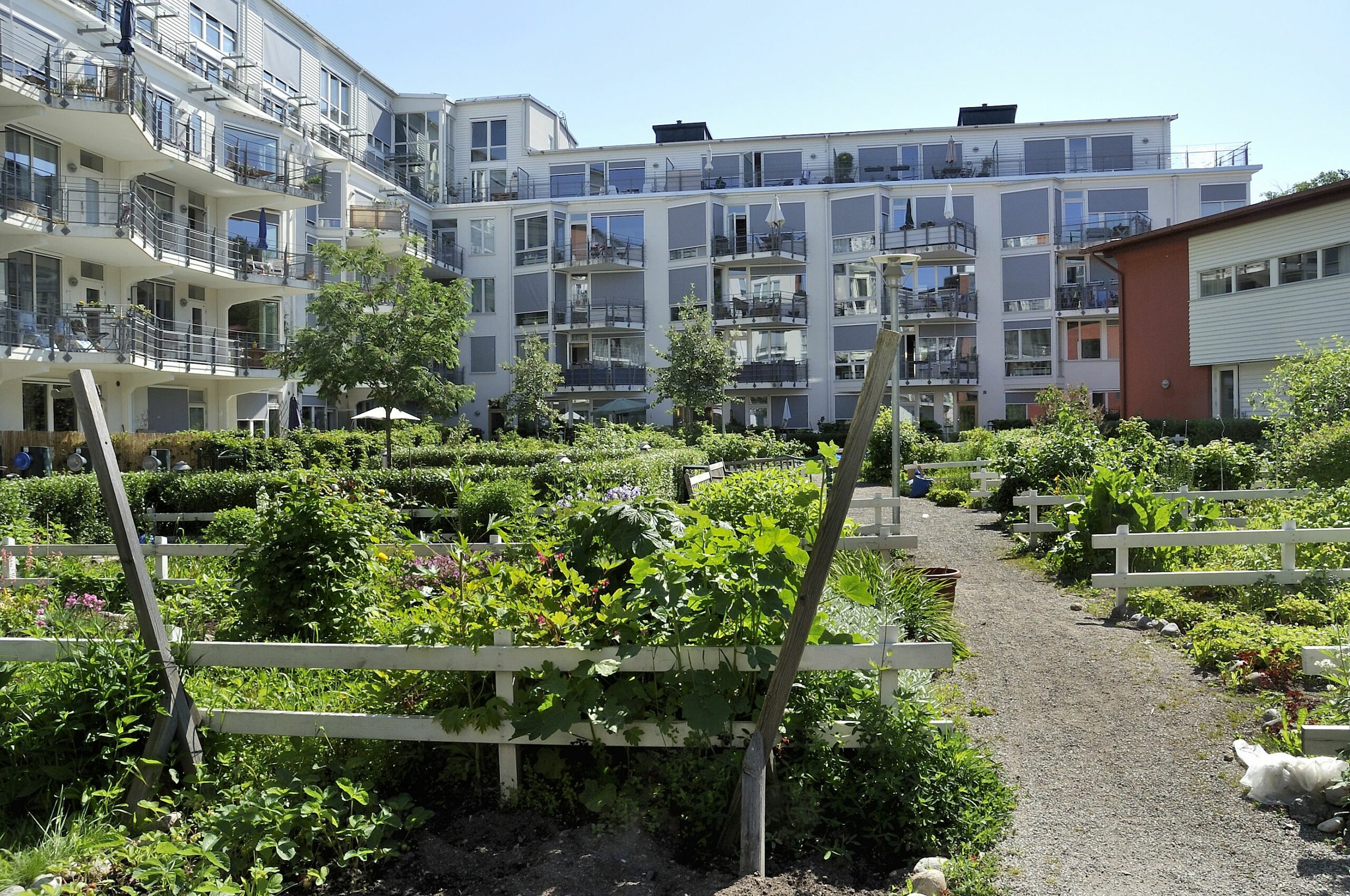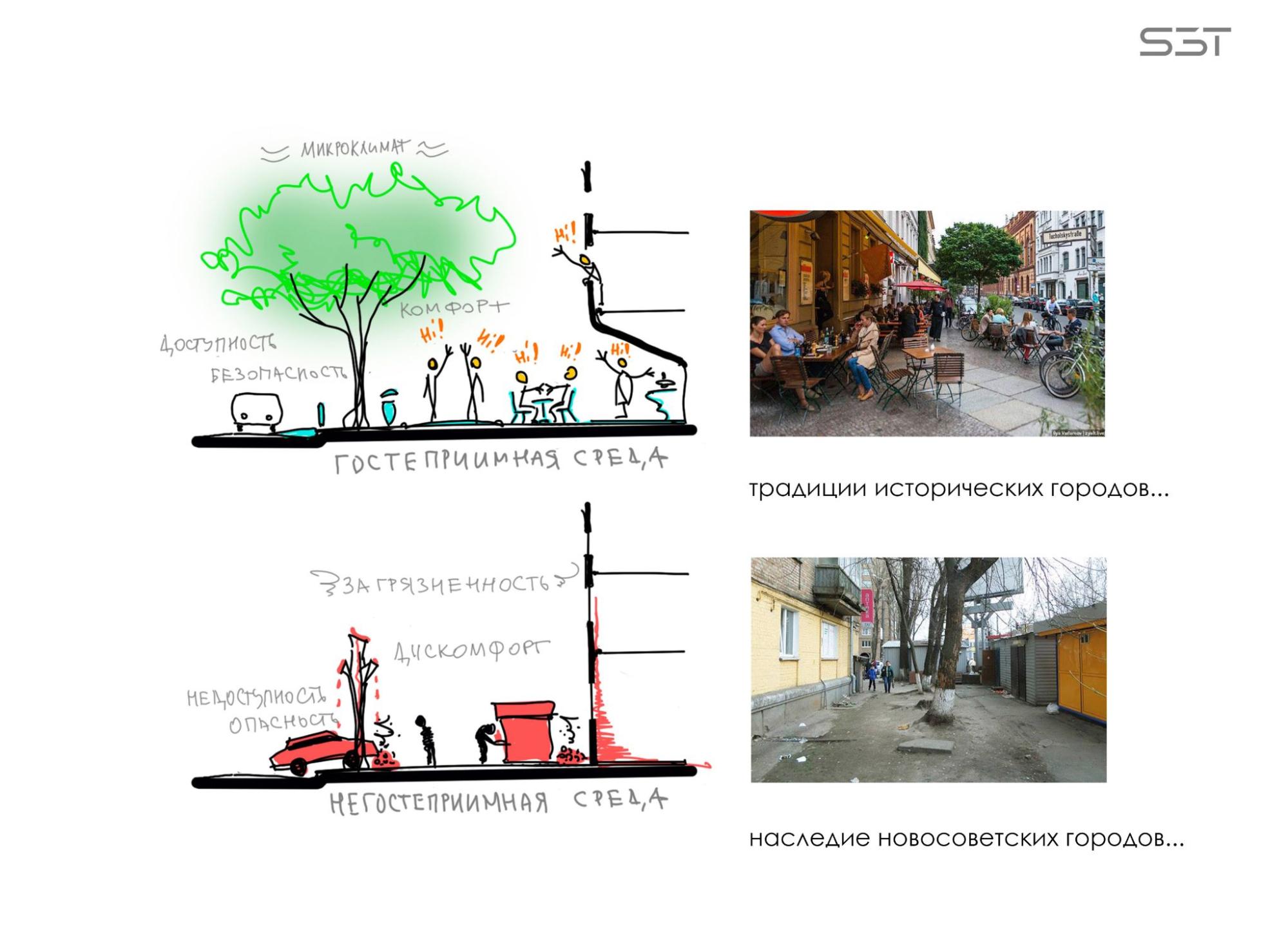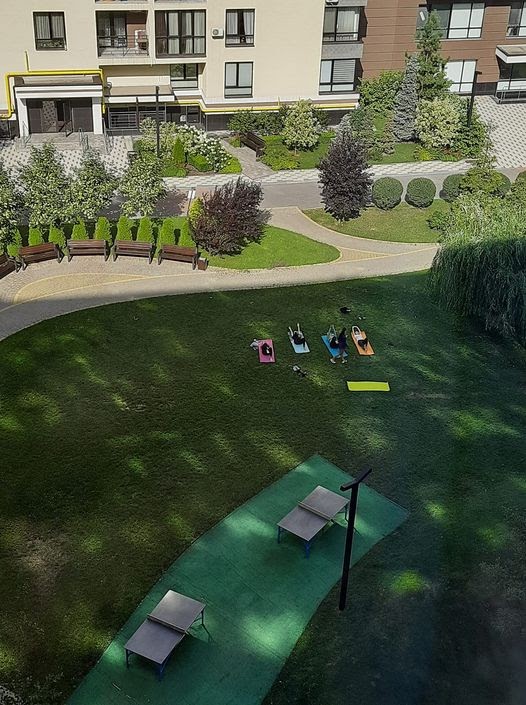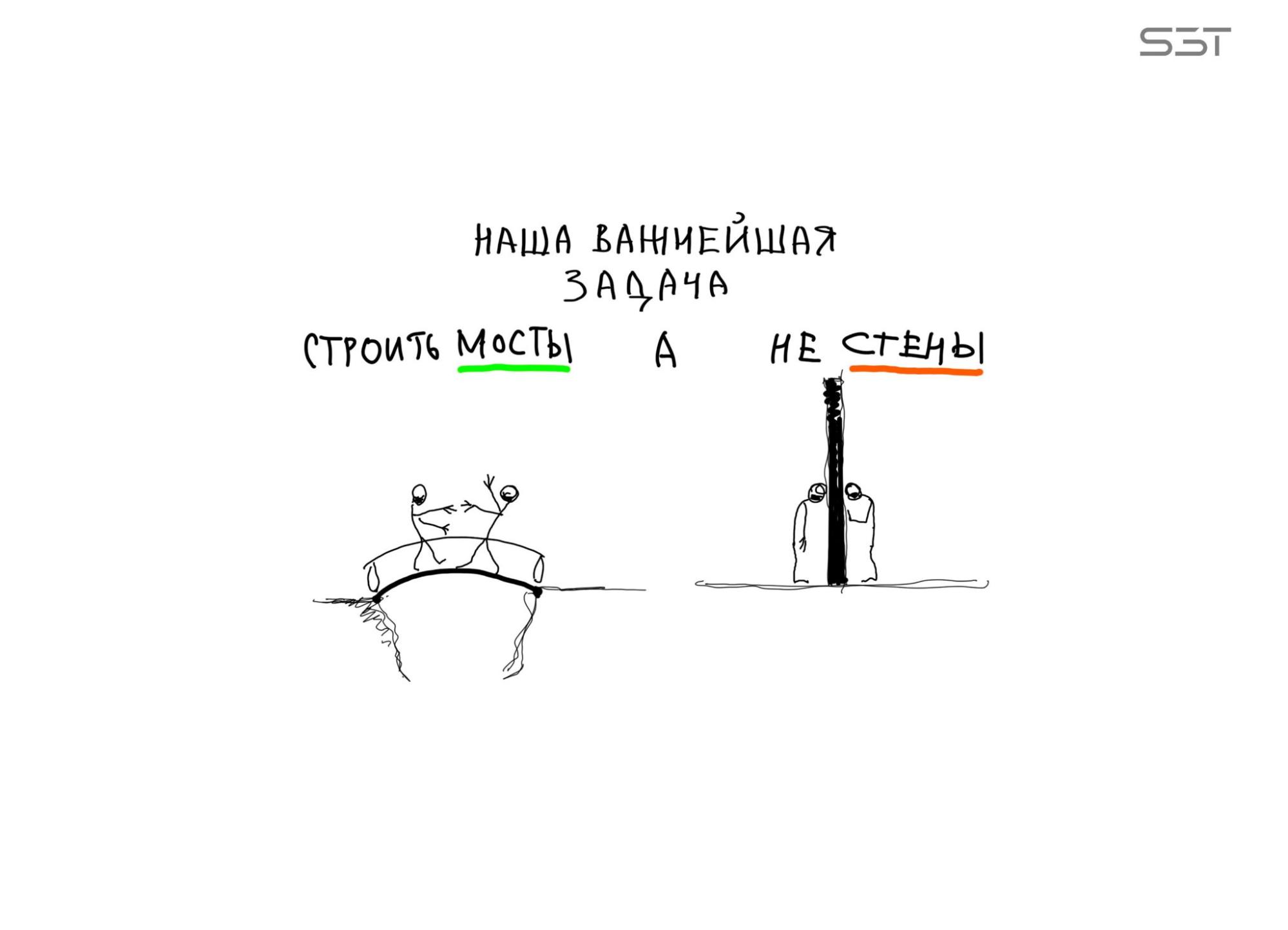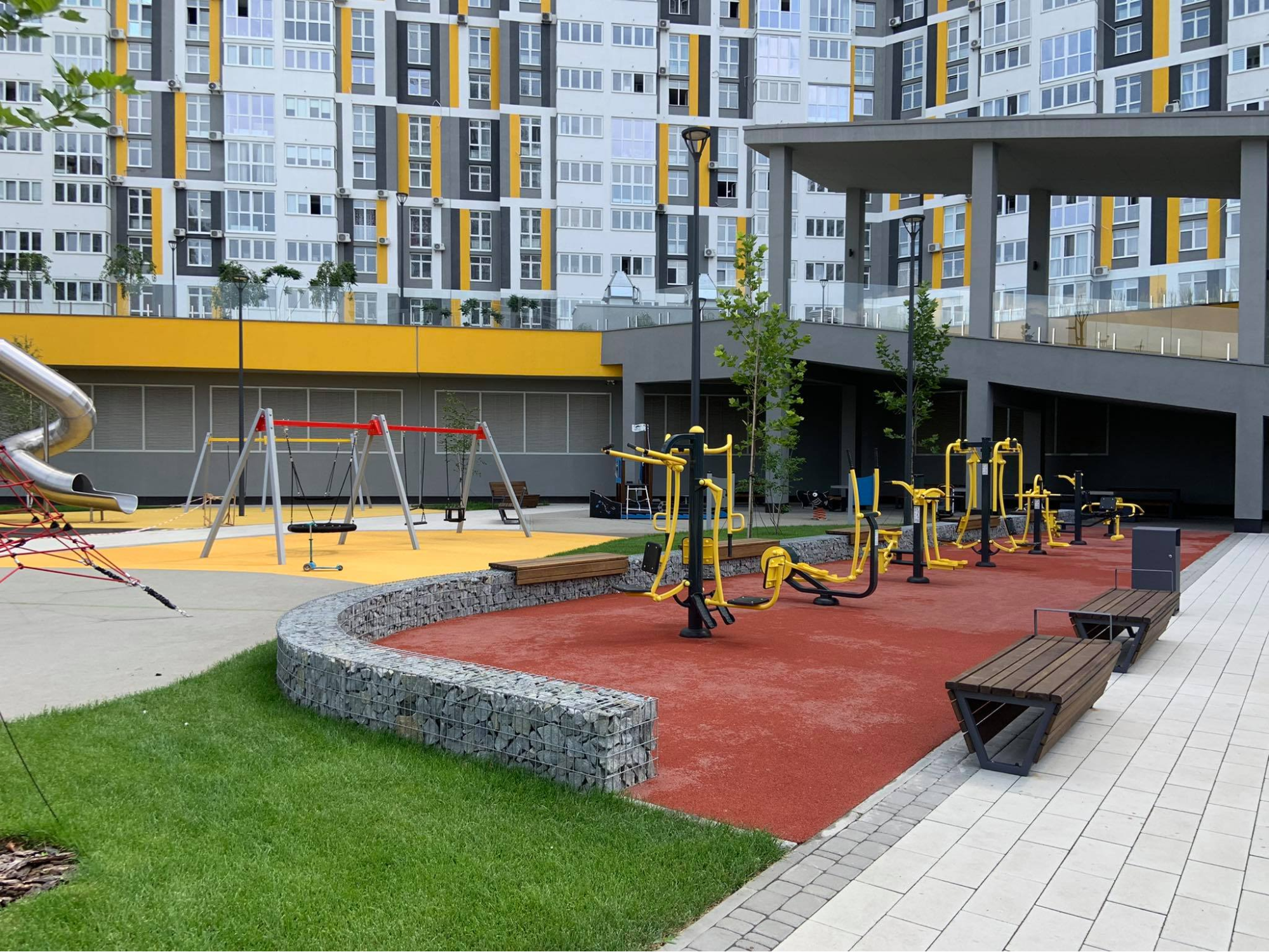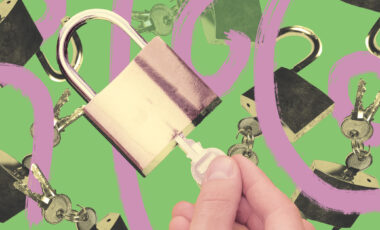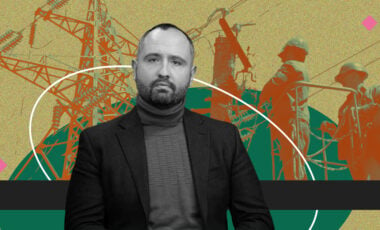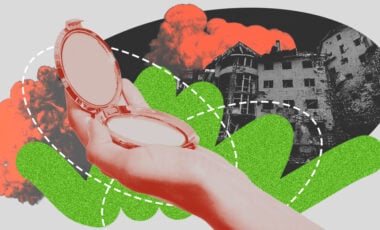Problem of Ukrainian yards: what's wrong with our yards and what to do with it
Swans made of tires and flower beds with children's toys are a completely curable diagnosis. Building residents only need to know what exactly to pay attention to and where to look for inspiration for change. After all, change is possible! We explain how to achieve it on your own (and why you shouldn't wait for the city to solve the problem).
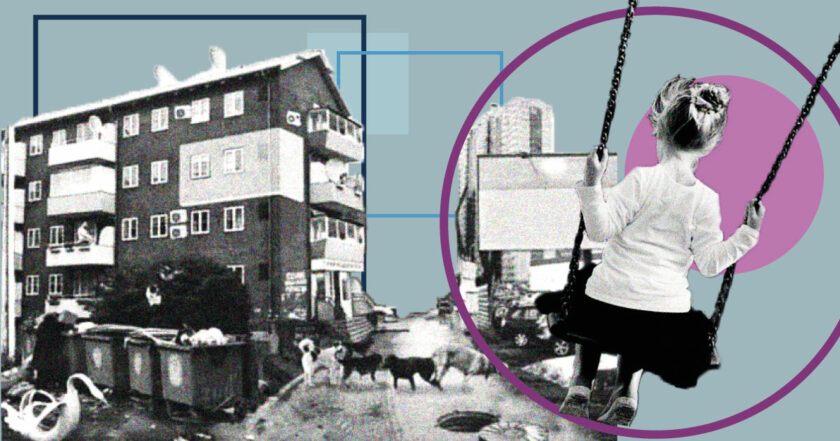
Urban planners define a yard as a multifunctional adjacent space, which should provide all residents of the surrounding houses with psychological, ecological, and social comfort, provide an opportunity to implement both quality recreation and various activities. That is, an ideal yard should be beautiful, safe, green, comfortable, and cozy. The yard territory is an important element of the city space as a whole because that's exactly where a "city for people" begins. In the yard, neighbors can solve common issues, get acquainted, spend time together. All this makes city life more intense and has a positive effect on society.
However, the citizens rarely consider the yard of their building a useful and pleasant space, and are even less often willing to invest their resources in it. The average yard of a Ukrainian high-rise building looks, if not completely abandoned, then clearly not the favorite "child" of the building co-owners. The vast majority of Ukrainian yards are used as a buffer between the street and the building or as car parking, and the residents aren't interested in what's happening to the yard. Everything that goes beyond the apartment isn't perceived as "their" territory, and even if people start conversations about the yard, the topic is, more likely, finding the culprits for its unattractive appearance.
Shabby sidewalks, neglected and chaotically placed greenery, uncomfortable benches, garbage bins next to playgrounds, which are renewed by candidates for city councils just before the next election; it's a typical landscape that we can see under the windows of high-rise buildings in almost any Ukrainian city. People don't want to take care of things that don't please them, and the enthusiasm of individual people, engaged in landscaping, is enough only for a flower bed and a painted fence, which in general doesn't significantly affect the situation.
How did we get here?
To understand whether we have a chance to break out of this vicious circle, we need to first understand the reasons for how it happened that our yards are in such an ugly condition. According to Kyiv-based urban architect Stanislav Diomin, today Ukraine is still in a transition from a socialist to a democratic society, and we'll have to get rid of Soviet traditions for a long time to come, for one or two generations.
For a long time, Ukrainians lived in a country where there was no private property. Everything around is collective or belonging to no one. There was simply no personal responsibility for the space where we all live and which surrounds us. The power theologization has led to the widespread belief that someone will come and do something to make things better. And if at the beginning of the last century, urban population self-organization was still preserved, in the mid-80s, it died out completely.
At the time of the declaration of independence, a pseudo-democratic paradigm emerged in the country; people celebrated freedom but didn't realize that it carries not only rights but also responsibilities. The law on housing cooperatives, which was adopted 20 years ago, has long existed only on paper, community associations were created extremely slowly, reluctantly, and sometimes only with a good push. Residents of high-rise buildings were completely satisfied with public utility offices service and, in fact, people, to this day, haven't taken responsibility for what's happening to their yards, the space that now belongs to them by law.
Shouldn't the city administration do something about it?
As the expert explains, if we talk about private and public spaces in the city, we need to clearly distinguish between what the city authorities are responsible for and what community associations should be responsible for.
The yard is something that the city shouldn't touch. There is a public space, like streets, squares, parks, that forms the city's image and for which the city (i.e. local authorities) is responsible. In turn, the maintenance and improvement of an apartment building's adjacent territory, and structures belonging to it is carried out by the balance holder of the building (co-op) or enterprise, institution, organization with which the property co-owners conclude a contract for maintenance and improvement of the adjacent territory. The order of improving public urban spaces, which is now being actively discussed by urban planners, won't apply to yards because the yard as an institution of common property is a matter for citizens.
In addition, communication between the reformers, the city authorities, and citizens is virtually absent. "Unfortunately, the government itself is very rigid and has a hard time understanding how to convey progressive ideas to the population, although ideally, it should be a moderator, assistant, and convenient and understandable service on the difficult path of ordinary citizens to responsibility for their own space.
The authorities' actions should be aimed at helping the population not only to form co-ops, but also to support consultatively, to propose some methods, programs, i.e. not just to legalize reforms, but also to help with implementation. To date, co-ops have been left to navigate freely, no development offices in cities and districts inform co-ops on how to properly manage their adjacent territory. The municipal authorities aren't interested in such educational activities, or they don't know how to implement them at all, because they're poorly educated in the issue.
Most of the yards that we've known since childhood are a legacy of Soviet buildings, the purpose of which was to provide emergency housing for millions of people who came en masse to the new industrial centers. The focus of Soviet architects was on fast standard solutions, universal for different regions. So we were surrounded by the usual blocks of Khrushchev-era and nine-story panel buildings with the same vague, and most importantly, dysfunctional and ill-considered yards, where we don't want to spend time, or even let our children walk there and wander through them in the evenings.
What do our yards suffer from
There are also specific planning problems, the so-called diseases of the post-Soviet urban space. Stanislav Diomin cites an interesting paradox of the generation of playgrounds as an example:
"If you look at western cities, integrating the population into public urban life takes place there from an early age. When I was in Barcelona, I noticed children were being carried on the city streets in carts to playgrounds bordering cultural and sports areas, which are located exclusively in public places, where you can get a positive social example. We traditionally condition that the playground should be located inside the yard, in a so-called safe environment. The paradox is that children mostly learn from the most active adults they see around them.
If you ask yourself who children most often encounter in the yard and whose behavior becomes a model for them, it turns out that the most active ones are always dissatisfied grandmothers who sit on benches, and lovers of beer or stronger alcohol who occupy the same space in the evening. The generation of children growing up on social examples returns to the playgrounds, but with their beer or gossip, in turn forming the worldview of the next generations of children who play there. A social yard incubator produces negative social experiences because active working people who could set a good social example are very rarely in the yards."
It's happening against the background of a constant conflict of interest. Any space in the city, especially as limited as courtyards, is a potential clash because each group of people has different needs and ideas about how the space in front of the building should be organized. The driver wants to put the car under the windows for free and sincerely believes that everyone should give him a place, the mother wants to walk with her child without fear that she'll be driven over by the car, the grandmother wants to sit in silence and she's disturbed by the cries of children, someone wants to play sports, older children want to drive the ball. There are other groups, such as entrepreneurs, who want to put a hot dog stall closer to a potential customer, and this group is the most solvent to pay those who control that this stall isn't here. Developers want to build a new house in the middle of the yard. Naturally, more socially and economically active groups prevail over socially vulnerable groups. Therefore, the rules that can help in the development of yards, citywide programs, should take into account the balance of interests.
There's another institution that should take part in this process as moderators, the people's deputies, who in reality immediately forget why they were elected after the election: to represent the interests of their electorate, hear the needs of all groups, and not only those who pay the extra money, and find a balance between them, link the interests of different groups, so as not to limit some at the expense of others. The concept of a good city provides opportunities for normal socialization, movement, microclimate, comfort, and functions that ensure the livelihood of its inhabitants per their needs for entertainment, development, self-expression, recreation, communication.
"Our country," says the urbanist, "has been in a state of an active social experiment for several decades. Abroad, in the cities of old Europe, the traditional organization of urban life has a great continuity. The path was also rocky and long. And a positive example is passed on from generation to generation on how to live in this area together.
Urban spaces were formed evolutionarily, there was no intensive growth at the expense of people who have no urban life experience. After all, city life is not only rights and privileges, but also a certain cultural tradition with the understanding that your freedom is limited by the areas of other people's freedoms, living in conditions of compromise and respect for those who live next to you. It's a tradition that needs to be instilled and developed.
Currently, most of the population of modern Ukrainian cities is urban in the first or second generation, and, accordingly, hasn't absorbed the urban life tradition at the level of family and household upbringing.
"It will pass. Studies show that it takes 3-4 generations for assimilation and cultural adaptation to take place. It affected Western Ukraine a little less and the results are visible. The urban tradition in the country's west is recovering faster and it's not even a matter of European influence, but simply a long cultural tradition, because the older generations, the bearers of urban traditions, pass on their experience to children and grandchildren."
Evolution and closed yards
Evolutionary processes that can radically change the appearance of our yards still occur. They are especially noticeable in new residential complexes, created based on good European examples. Here, from the very beginning, management companies create rules that must be followed by everyone who moves into new buildings. Most people who buy new apartments are willing to follow these rules. These are socially active people. They've traveled the world and chosen what's closest to them. Unfortunately, this convenient legal form is more difficult to impose in a formed society, where everyone is accustomed to living as they've always lived.
Yana Levina, a resident of one of the capital's new residential complexes, is proud of her yard:
"Our residential complex is young, it's only four years old. A year after settling, we created co-ops and changed the developer's service company to one that offered more services even for a slightly lower fee. Our yard is shared by four buildings. The most important issues regarding landscaping are put to the vote of all residents. And everything else is discussed in the chat: parking, lighting, green areas, and other issues."
Chat is always boiling. We have a well-groomed area, playgrounds and tennis courts, tennis tables and many plants not only inside but also on the outer perimeter. Intercoms and surveillance cameras are everywhere. There are a lot of cars, as in any area, but they're prohibited in the yard; we have children riding bicycles and scooters, adults walk quietly and play sports. Next to the house, there are paid parking lots and a closed parking lot, many of the residents park their cars in front of the house on the street side.
Outside, the first floors are set aside for business; there we have cafes and shops, and it seems that there will even be a clinic. Since the yard is closed, we can maintain it in perfect condition. In general, the whole complex is guarded, but we enter the yard with our keys. The only problem is that there are constant disputes because other complex residents also want to spend time here, although there are many other places for them too. Previously, outsiders could get to us until 10 pm, then the passage was blocked and the entrance remained only for residents. But now the yard is closed around the clock to preserve our plants and to be quieter. It seems temporary, but we liked it, we're thinking about leaving it like that in the future."
Not only new ones but also every yard that "could" more profitably and easily close and fence off from less progressive neighbors. For residents of residential complexes, this seems like a logical, rational, and justified decision. But what is good for the residents of a secluded complex is not healthy for the city as a whole. If all the yards in the city, as well as entire neighborhoods, do so, we'll get an unsuitable living environment.
Closed yards expose another problem. Many new housing estates and successful old yards, which are now fenced and closed, contribute to increased segregation and further increase the social gap between those who find themselves on opposite sides of fences. It, in turn, creates another potential conflict: where there's a wall, there's a division into varieties, and it limits the adoption of positive social experiences.
"It's clear," Stanislav Diomin comments, "that those who lock their yards treat the people around them like some cattle that will start breaking benches and shouting under balconies. In a separate limited space, it will work, but there will be no cultural diffusion. Those who went to Europe to see how to live and managed to escape from the "dirty world" hide their positive experiences from others, depriving them of the opportunity to look at Ukraine of the European model, a reason to learn and change themselves. You still can not hide in an artificial bubble.
The earth is a small pebble that flies through space, we're all on this ship and we need to escape to comfort together. People who gossip or shout under windows, cut swans out of tires, and decorate flower beds with old soft toys don't know what else can be done. Currently, there's no critical mass of people in problematic yards who can change the yard; any changes (yard redevelopment, purchase of ergonomic benches, or seedlings of unfamiliar plants) are met with great resistance due to misunderstanding why it's necessary and most importantly, why pay for it. The way out of this situation could be open house days, buffer zones, which open the areas with ideal conditions for others. In my projects, I always offer developers to make part of the yard public, but in fact, they're very reluctant to do so, segregation sentiments in society are quite strong.
What should an ideal yard of a healthy person look like and what can we do for it?
- The yard of modern times is a space where accessibility and inclusiveness are well realized. When everyone, regardless of their physical capabilities, can get where they need to go. Pay special attention to the combination of surfaces (side stones, ramps, stairs).
- Comfortable biological living conditions must be organized. Climatic conditions in the yard provide a good deal of greenery. Soil landscaping, shrubs, and trees can create an ecological incubator, absorb pollution, increase humidity, stabilize temperature, create breezes and improve the microclimate in apartments. Landscaping work should begin only after cleaning the area from debris and construction waste. The important thing is felling of trees already present in the area is prohibited unless properly authorized.
- Security organization: lighting should be functional, architectural, informational; absence of terrain differences that can become potential sources of danger for children; video surveillance, recording administrative offenses. Transparent doors, entrances in order, bright light sources inside and in front of the entrance will also provide additional security.
- Comfort: correct ergonomics, comfortable outdoor furniture; well-organized garbage disposal system not only in space but also in time, timely cleaned bins, taken out of the yard, or underground garbage containers. It should feel nice to sit on the benches. There should be an opportunity to always find shade or vice versa, bask in the sun, or hide from the sudden rain. A good idea is to make a large canopy and arrange a place for recreation under it.
- Organization of positive activities. Playgrounds for children under 2 years old, i.e. before the beginning of their active socialization. You should bear in mind that unhygienic sand is contraindicated for children. Young children need simple safe constructions that promote great motor skills and tactile sensations, and then they need to "come out of the yard" to gain a positive experience. Or combine playgrounds with sports areas.
- Playgrounds and recreational areas, where the grandfather can go out with his grandson and play chess; organization of outdoor gazebos for communication with neighbors and joint holidays, which is very practiced in Europe (the so-called "Wine Days"), when everyone goes out, communicates, shares news and discusses joint plans. It's difficult for one person to change something. To put things in order and reform the yard, you need to unite the neighbors.
- Active ground floors for primary household services, like laundries, coffee shops, grocery stores. Of course, they should be at the facade than in the yard, but it's also an element of comfort. There are a lot of "home" cafes in Europe, where you cook "from under the knife." A high-rise building with a home kitchen on the ground floor.
- Another common problem with yards is cars. Since residents leave cars near the house, it forms an unfriendly and dangerous space, where you don't want to be. The solution to this problem is the implementation of the "yard without cars" concept. It offers parking spaces on the outside of the building to make the yards safe places to spend time.
- A good level of acceptance and identification is what we call aesthetics. Culture is not limited to dubious decorations made of plastic bottles and other junk. Fortunately, Google has everything, including successful solutions offered by professional designers, both foreign and Ukrainian.
- The land plot fencing also refers to apartment housing improvement, but during its construction, we should bear some restrictions in mind: the fence should not create obstacles for driving or passage to the building of repair crews, for power personnel, etc.; the yard cannot be closed completely, as it may be the only way for residents of neighboring houses to pass; playground and parking can be fenced both partially and completely.
- It's important not only to do something good but also to tell the world about it. Any successful urban transformation cases attract a lot of attention today. A new flower bed where a piece of land was previously trampled is already a reason to write about you. Publications in the media and social networks motivate people to do more and be better.
Drawings by Stanislav Diomin


